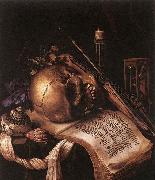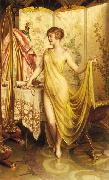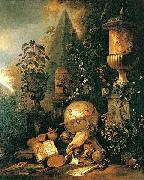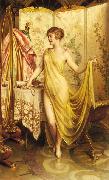
Öl auf dem Segeltuch,das echte Aroma von alten Meistern
|
Renard Emile
|
|||
|
|
|||
| French artist ,1859-1930 | |||
|
|
|||
|
|
Vanitas new21/Renard Emile-668227.jpg Gemälde IDENTIFIZIERUNG:: 62372 |
52 x 44 cm Mus?e des Beaux-Arts, Marseille The artist specialized in complex 'Vanitas' pieces of dramatic clarity. The general influence on his art is Netherlandish, and it is likely that his unsigned pictures are still classified under the Northern schools. Most of his pictures are dominated by a grisly skull surrounded by numerous other indications of the brevity of life. He was received into the French Academy in 1663 as a portraitist | |
Höhe Breite |
Zoll/CM |
||
|
X |
|
||
|
|
|||
|
Frederic Soulacroix
|
|||
|
|
|||
| 19th Century Portrait Painter Victorian Period.1825-1879 | |||
|
|
|||
|
|
Vanitas new23/Frederic Soulacroix-587654.jpg Gemälde IDENTIFIZIERUNG:: 70576 |
1858-1933 Oil on canvas 75.6 x 46.4 cm | |
Höhe Breite |
Zoll/CM |
||
|
X |
|
||
|
|
|||
|
Matthias Withoos
|
|||
|
|
|||
| (1627-1703), also known as Calzetta Bianca and Calzetti, was a Dutch painter of still lifes and city scenes, best-known for the details of insects, reptiles and undergrowth in the foreground of his pictures. Withoos was born in Amersfoort. He studied under Jacob van Campen, at his painters' school just outside the city at his country house, and then with Otto Marseus van Schrieck. When he was 21, Withoos made a trip to Rome with Van Schrieck, and Willem van Aelst. There they joined the group of northern artists known as the "Bentvueghels" ("Birds of a feather"), and Withoos went by the alias "Calzetta Bianca" ("White Hose") a translation of his name into Italian. Withoos' work caught the eye of the cardinal Leopoldo de Medici, who commissioned various paintings from him. In 1653, the artist returned to Amersfoort.When French troops occupied Amersfoort in the "Disastrous Year" of 1672, Withoos fled from Amersfoort to Hoorn, where he would remain until his death in 1703. | |||
|
|
|||
|
|
Vanitas new23/Matthias Withoos-744958.jpg Gemälde IDENTIFIZIERUNG:: 71719 |
17th century Oil on canvas | |
Höhe Breite |
Zoll/CM |
||
|
X |
|
||
|
|
|||
|
Frederic Soulacroix
|
|||
|
|
|||
| 19th Century Portrait Painter Victorian Period.1825-1879 | |||
|
|
|||
|
|
Vanitas new24/Frederic Soulacroix-695474.jpg Gemälde IDENTIFIZIERUNG:: 74298 |
Date 1858-1933 Medium Oil on canvas Dimensions 75.6 x 46.4 cm ? cyf | |
Höhe Breite |
Zoll/CM |
||
|
X |
|
||
|
|
|||








